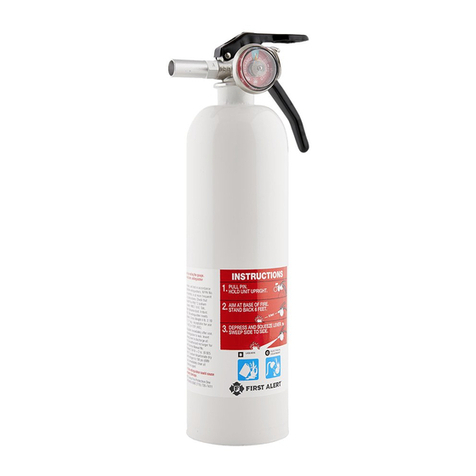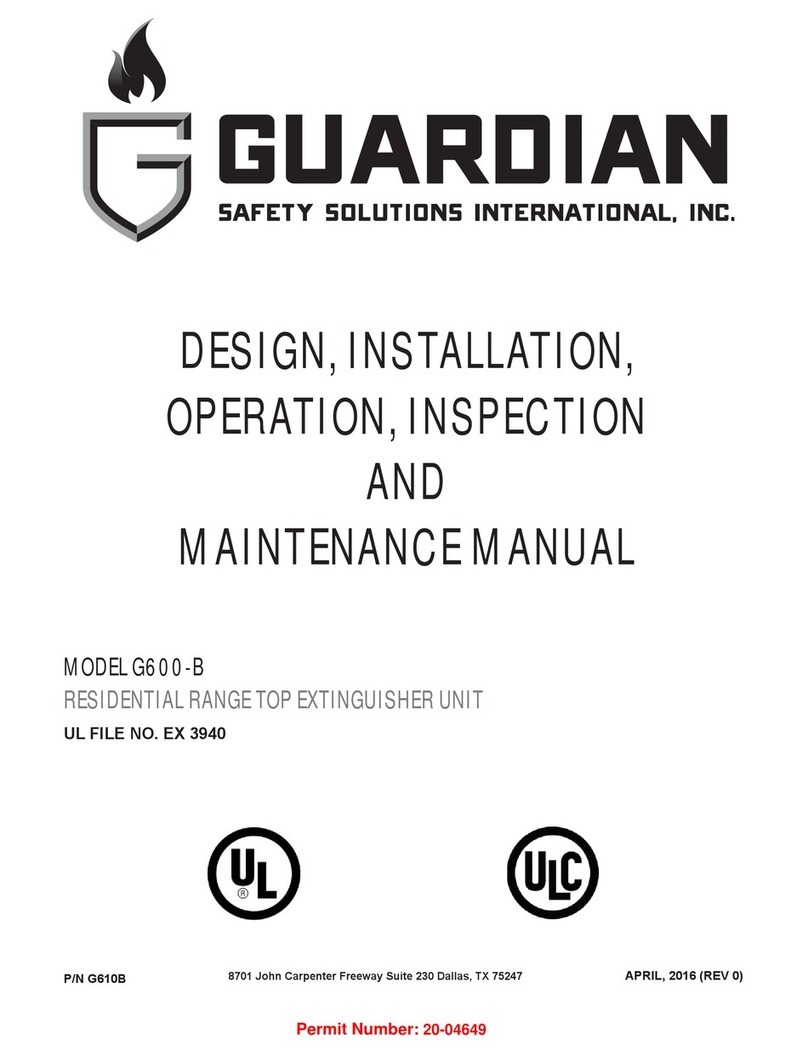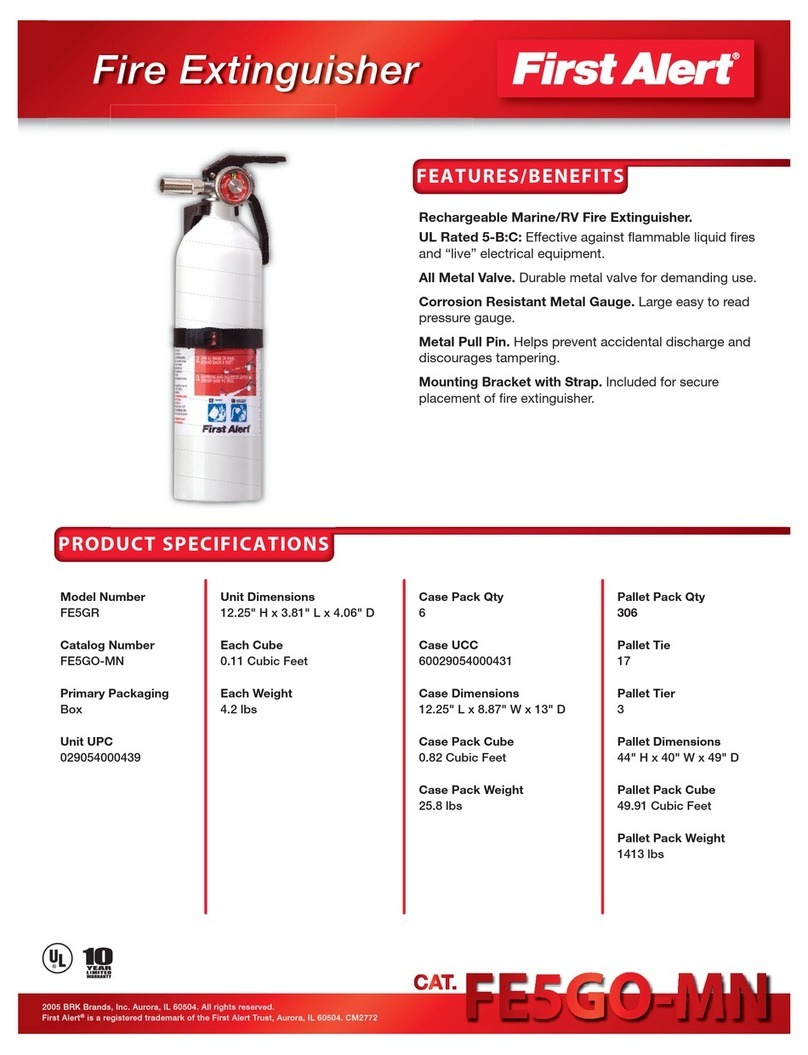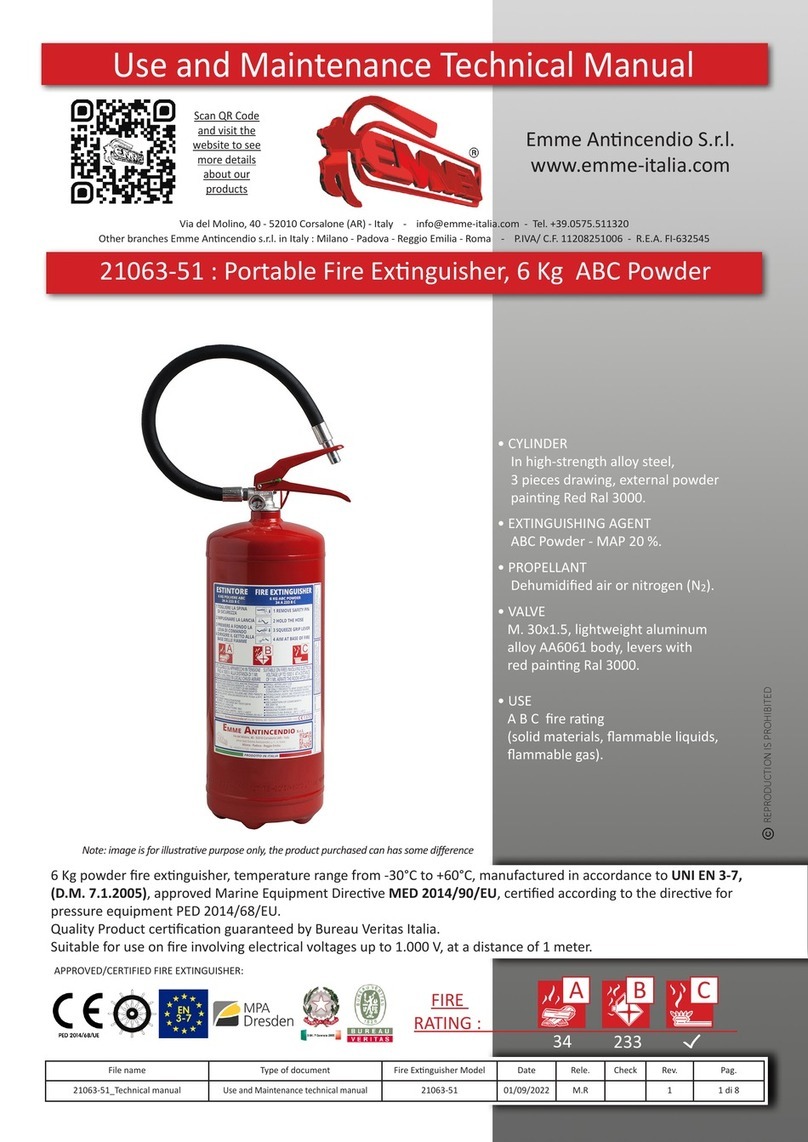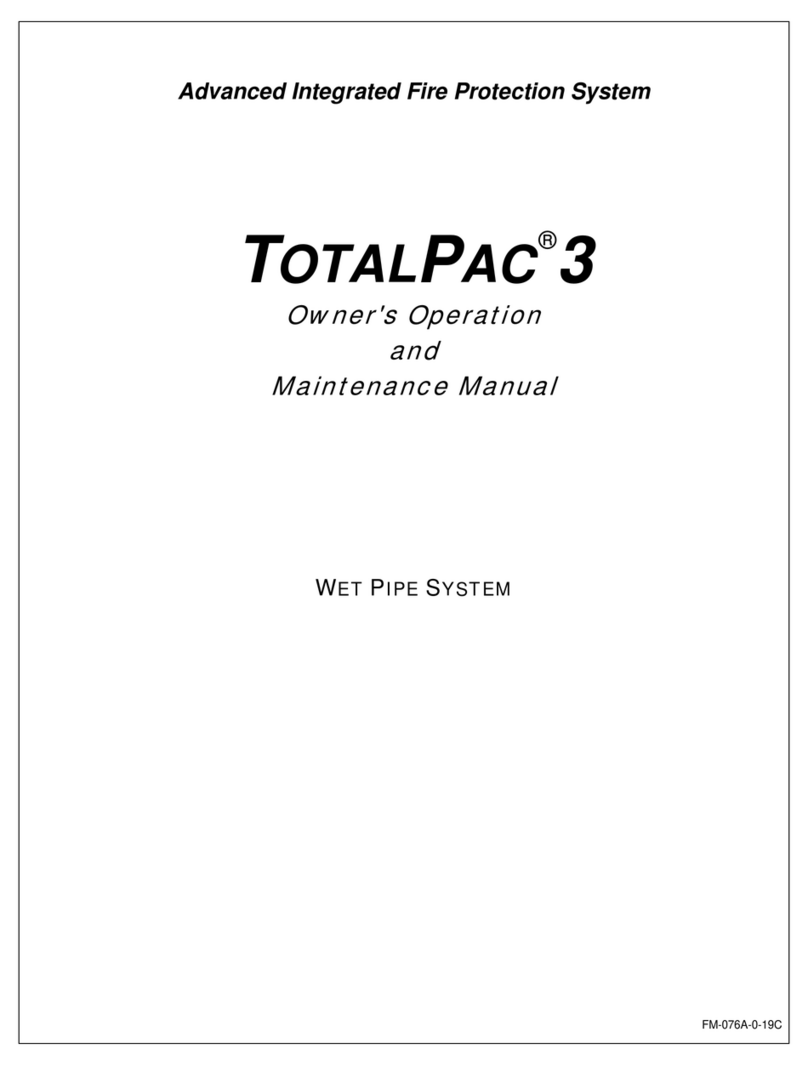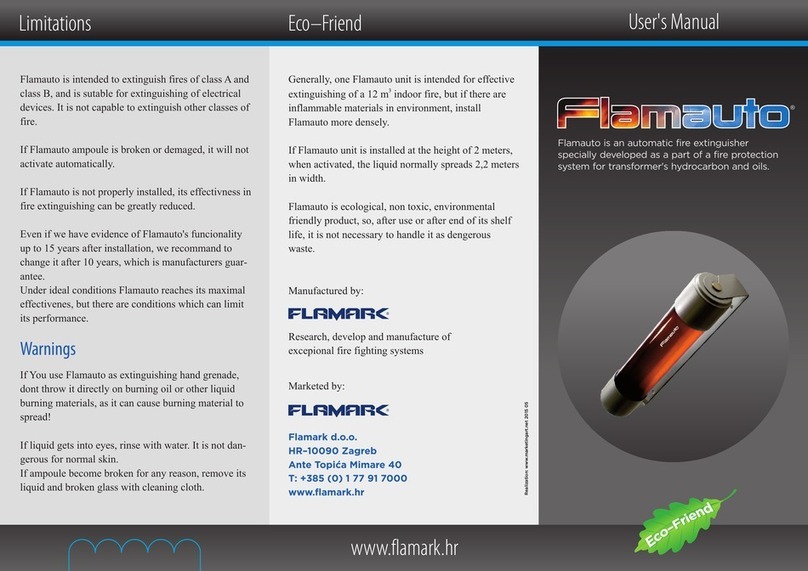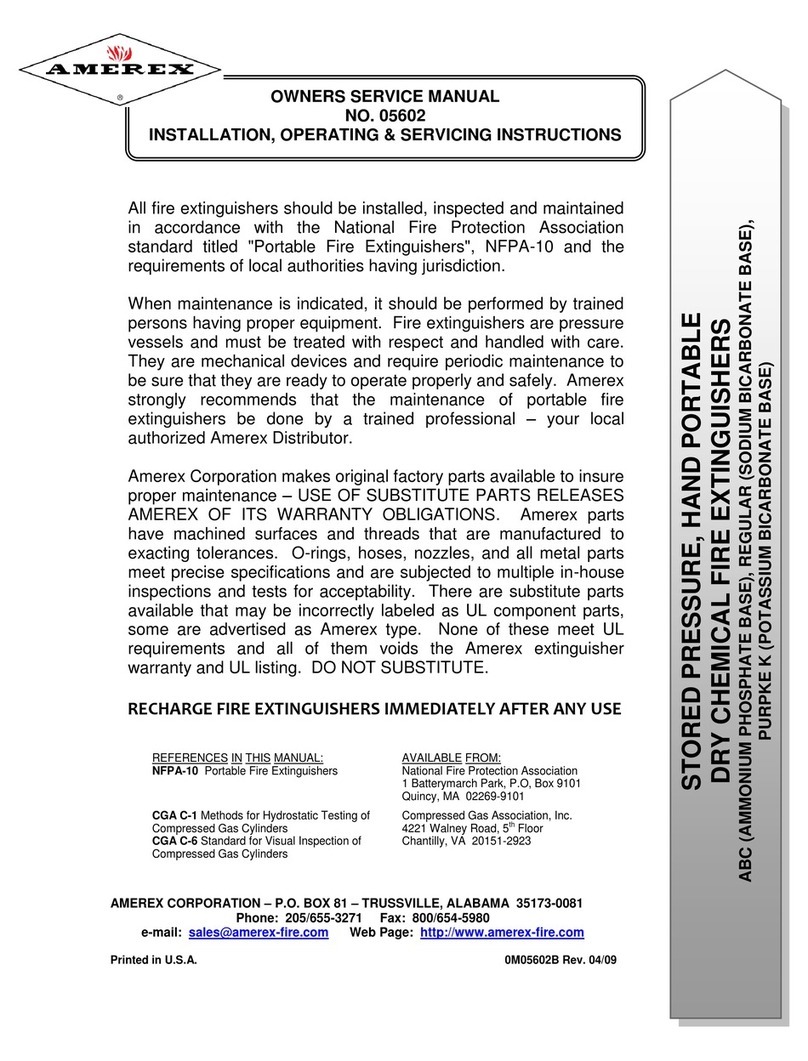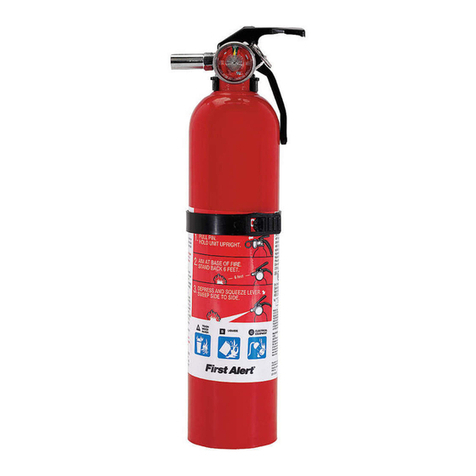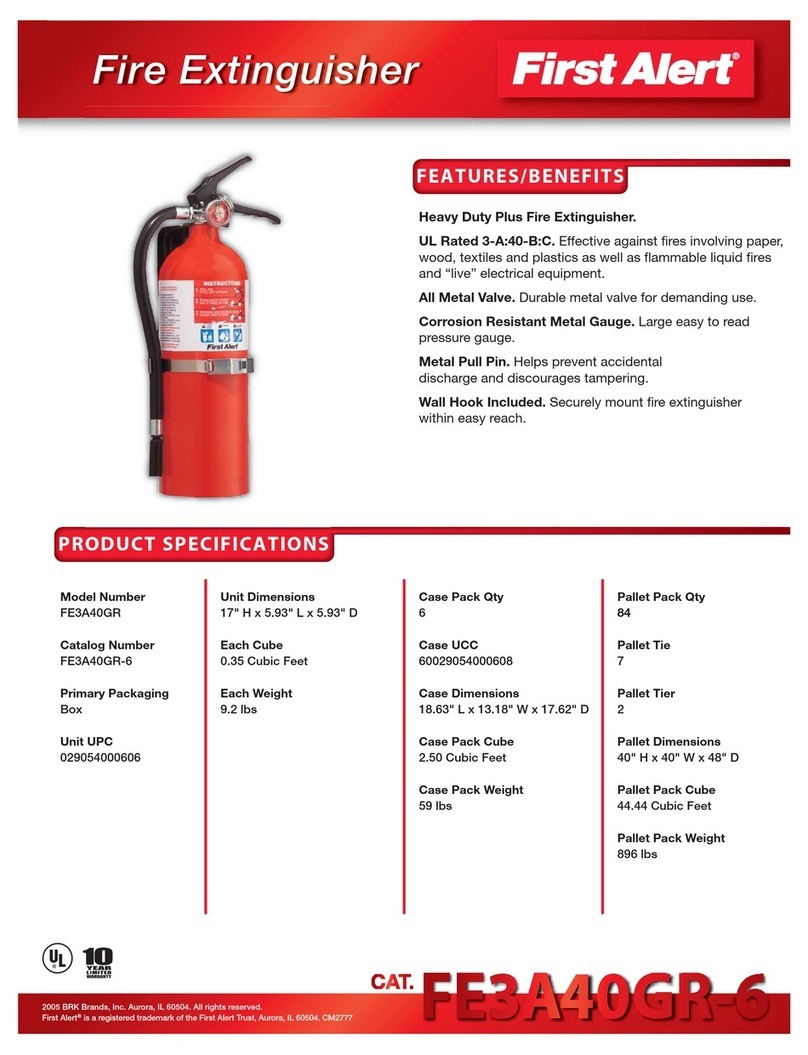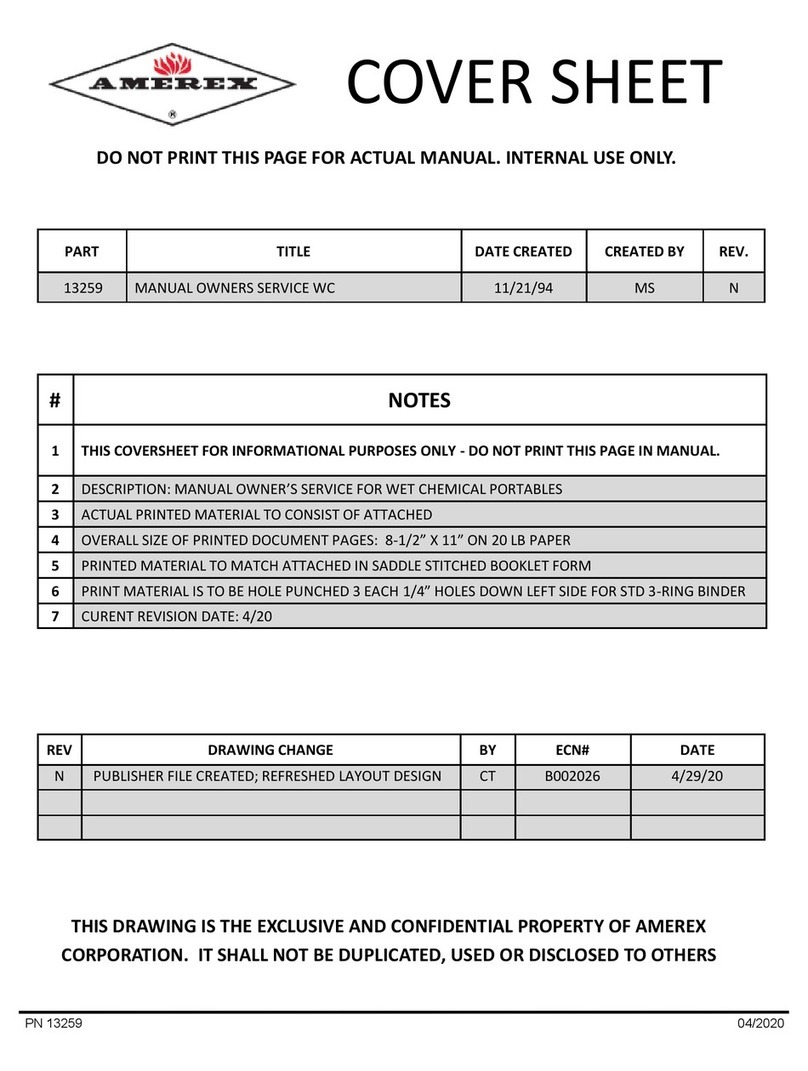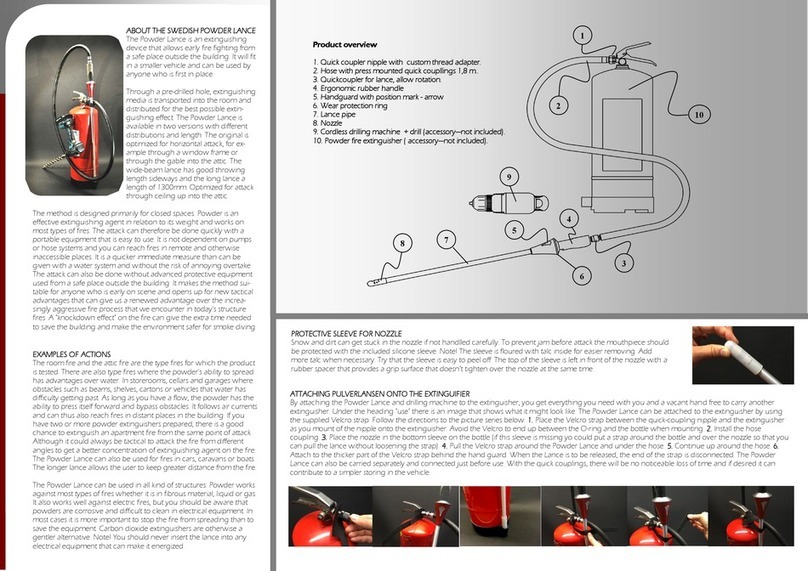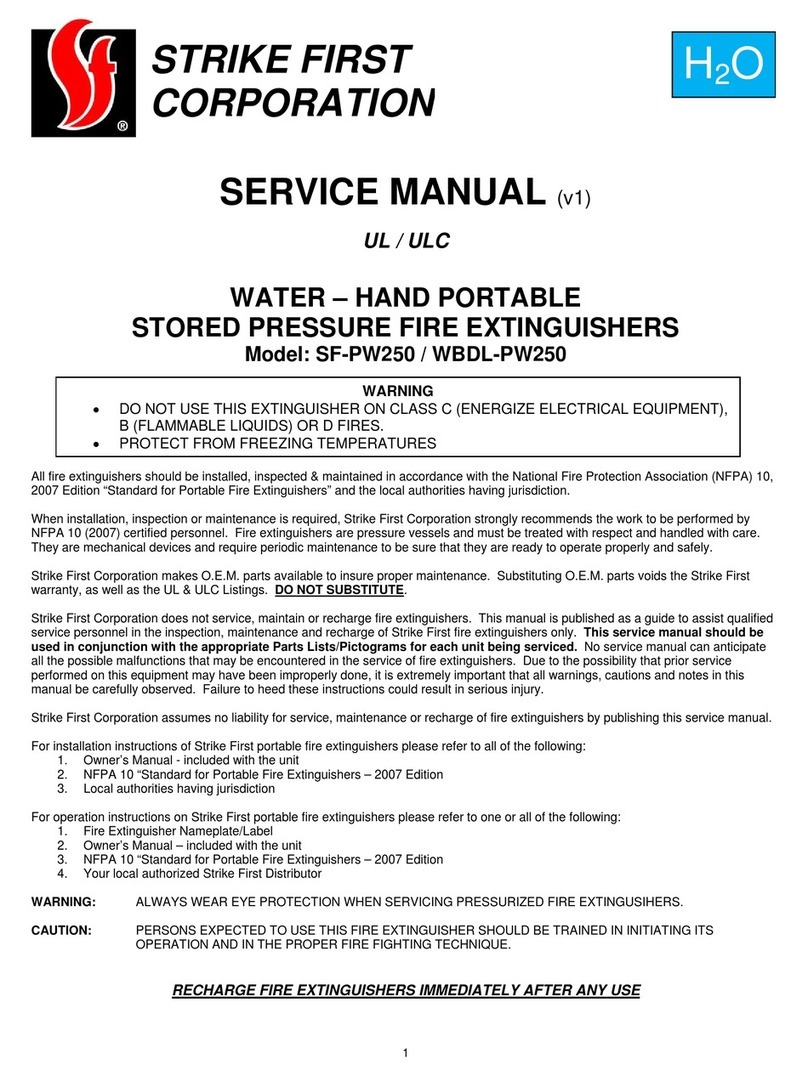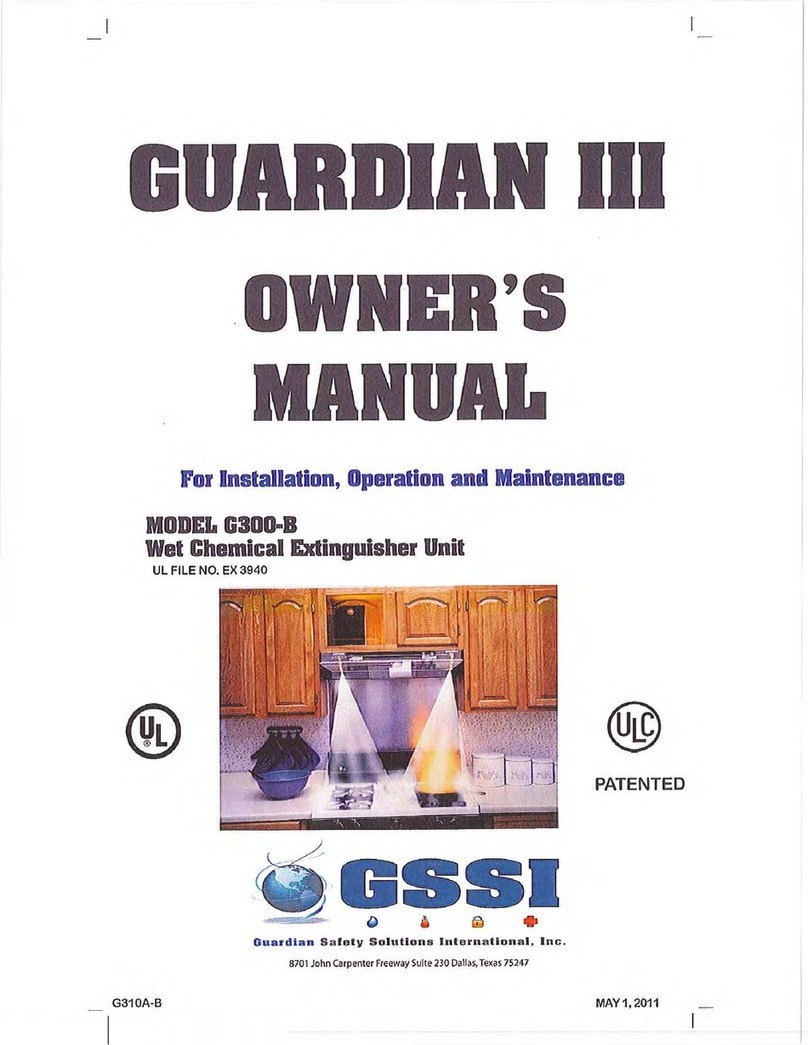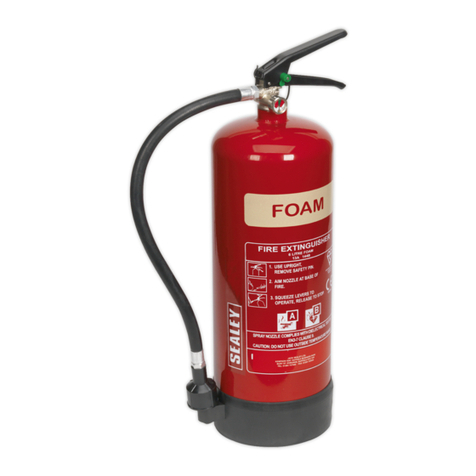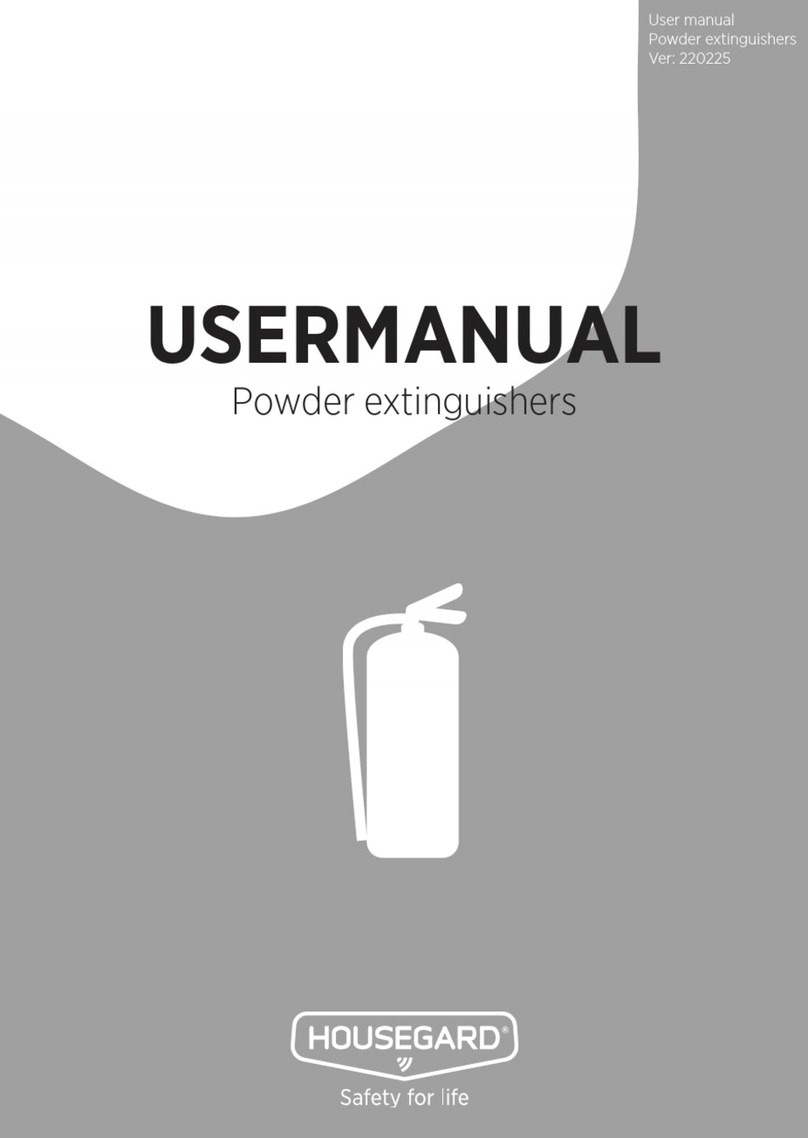
Page: vii
MV & LV SERIES ENGINEERED DRY CHEMICAL FIRE EXTINGUISHING SYSTEM
OPERATION, DESIGN, & SERVICE MANUAL
REV C
Document # DOC324
Issued: April 26, 2018
Revised: March 22, 2022
UL FILE # EX27541
Diagram Index
Figure 2.1.3.1a Mv Cylinder ValveAssembly 8
Figure 2.1.3.1b Mv Cylinder Valve w/ Trim Kit (Single Cylinder System) 9
Figure 2.1.3.1c Mv First Cylinder Valve w/ Trim Kit (Multiple Cylinder System) 10
Figure 2.1.3.3a Lv Cylinder ValveAssembly 11
Figure 2.1.3.3b Lv Cylinder Valve w/ Trim Kit (Single Cylinder System) 12
Figure 2.1.3.2c Lv First Cylinder Valve w/ Trim Kit (Multiple Cylinder System) 13
Figure 2.2.1 Pressure Gauge Assembly 14
Figure 2.2.2 Low-Pressure Supervisory Switch Assembly 15
Figure 2.2.2.1a Low-Pressure Supervisory Switch Conduit Adapter 16
Figure 2.2.2.1b Low-Pressure Supervisory Switch w/ Conduit Adapter (Sv Series Shown) 16
Figure 2.2.3a Electric Valve Actuator 16
Figure 2.2.3b Electrical ValveActuator w/ Limit Switch Wiring Diagram 17
Figure 2.2.4 Manual ValveActuator 17
Figure 2.2.5.1 Mv Series Fittings 18
Figure 2.2.5.2 Lv Series Fittings 18
Figure 2.3.1 Remote Nitrogen Actuation Cylinder 19
Figure 2.3.2 Remote Pneumatic Actuation/Bracket Kit 19
Figure 2.3.3 Pneumatic ValveActuator 20
Figure 2.3.4 Vent Check 20
Figure 2.3.5 Pilot Actuation Mid Line Tee 21
Figure 2.3.6 Male NPTAdapter 21
Figure 2.3.7 Pilot Actuation End Line Tee 21
Figure 2.3.8 Flex Hose 21
Figure 2.4.1 Lever-Pull Manual Actuator 22
Figure 2.4.2 Manual-Pneumatic Actuator 22
Figure 2.4.3 Remote Pilot Actuation Tee 22
Figure 2.4.4 NPT Style PilotActuation Check Valve 23
Figure 2.4.5 XP Low-Pressure Supervisory SwitchAssembly 23
Figure 2.5.1a Lv Manifold Check Valve 24
Figure 2.5.1b Mv Manifold Check Valve 24
Figure 2.5.2 Weather-Proof Discharge Pressure Switch, Manual Reset 25
Figure 2.5.2.1 Explosion-Proof Discharge Pressure Switch, Self Restoring 25
Figure 2.5.3a Typical Cylinder Spacing for 200 lb Cylinders 26
Figure 2.5.3b Typical Cylinder Spacing for 600 lb Cylinders 27
Figure 2.5.3c Typical Cylinder Spacing for 1000 lb Cylinders 28
Figure 2.5.4 Pressure Release Trip 29
Figure 2.5.5 Discharge Indicator 29
Figure 2.6.1.1 LAOH Nozzle 30
Figure 2.6.1.2 Tankside Nozzle 30
Figure 2.6.1.3 TF Nozzle 30
Figure 2.6.1.4 Three-Way Nozzle 31
Figure 2.6.1.5 Duct and Plenum Nozzle 31
Figure 2.6.1.6 Screening Nozzle 31
Figure 2.6.1.7 Total Flood, Perimeter Nozzle 31
Figure2.6.2JSH-360andJSH-180DischargeNozzleCongurations 32
Figure 3.2.1 Nozzle Placement for Overhead Local Application 39
Figure 3.2.2 Nozzle Placement for Tankside Local Application 40
Figure 3.2.3.1a 180° Sidewall Nozzle Maximum Coverage Area (Single Nozzle) 42
Figure 3.2.3.1b 360° Radial Nozzle Maximum Coverage Area 42
Figure3.2.4.1NozzlePlacementforFixedOriceTotalFloodApplication 43
